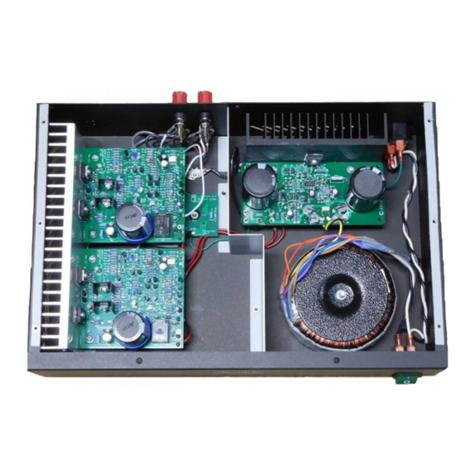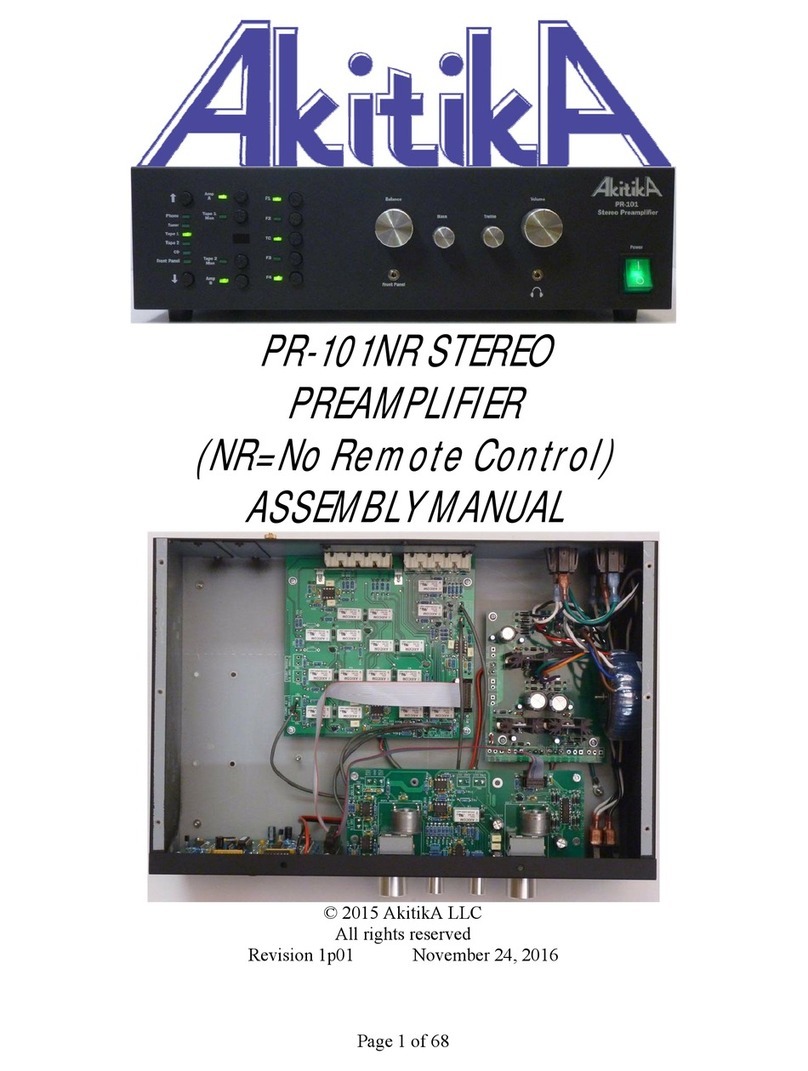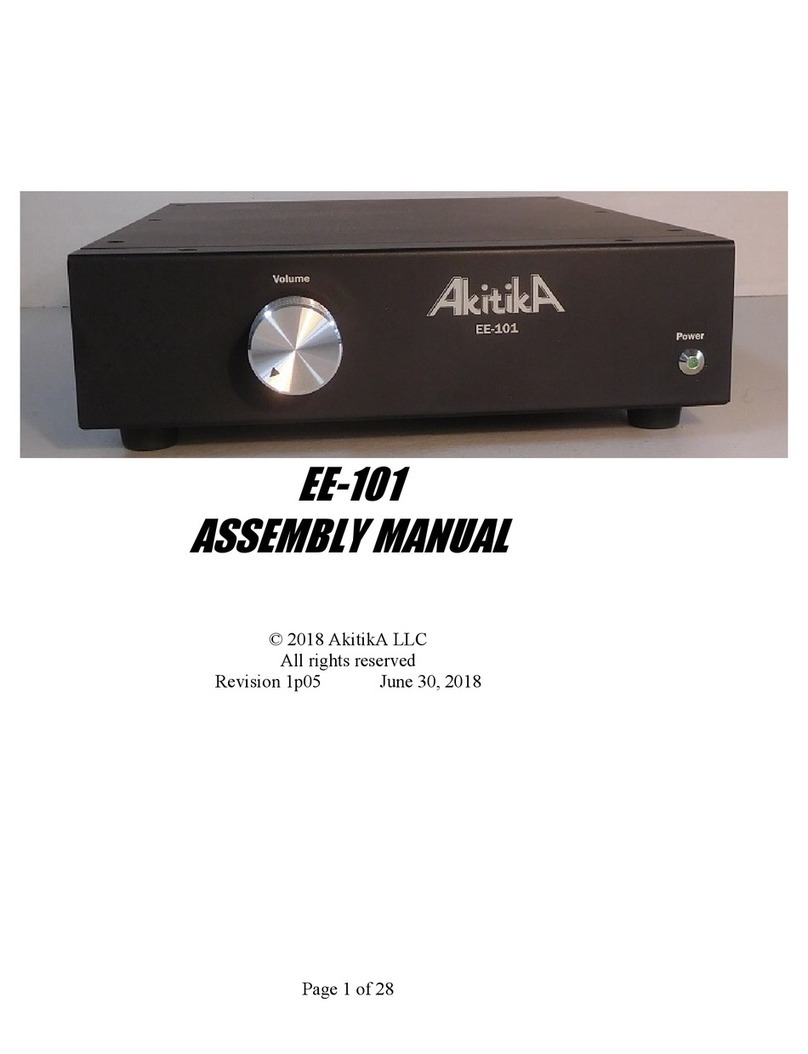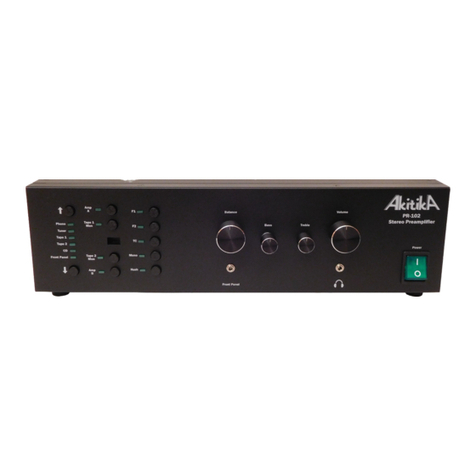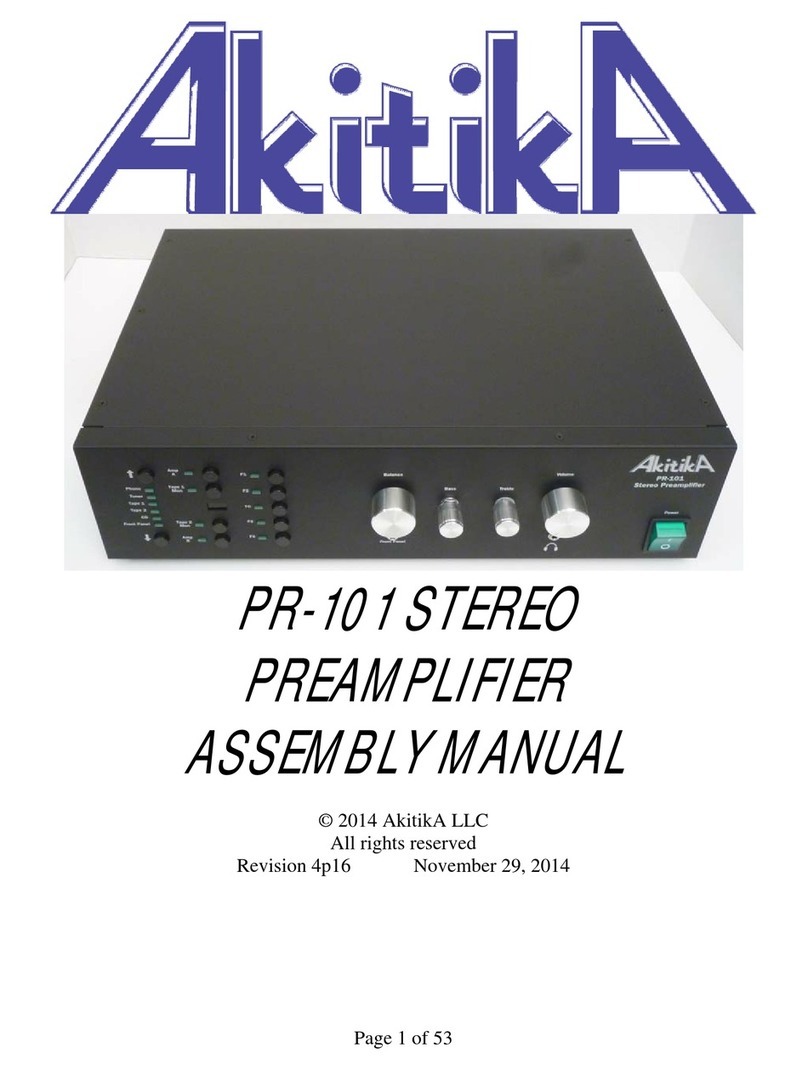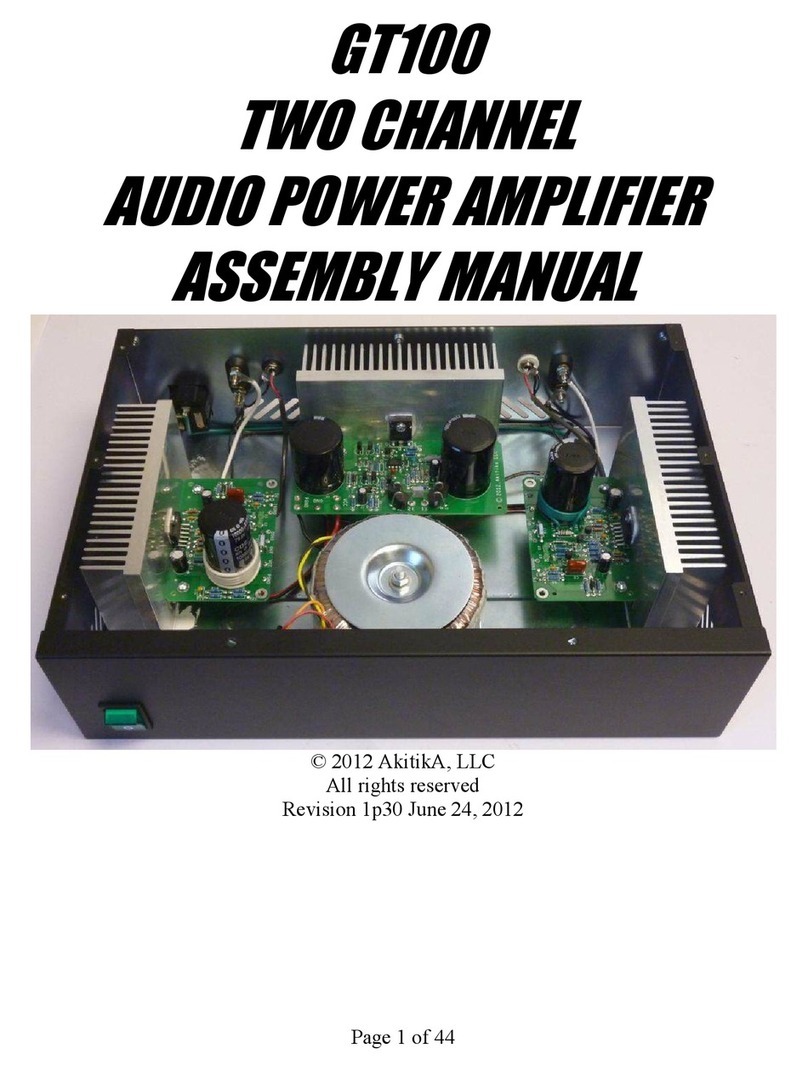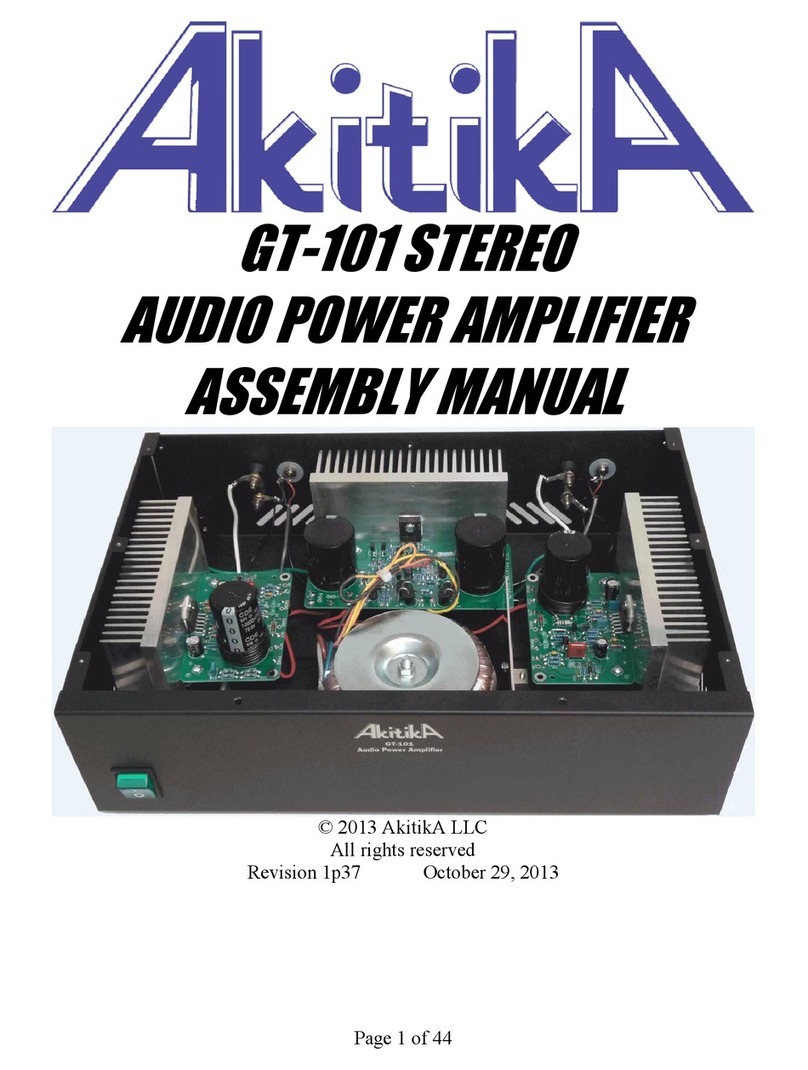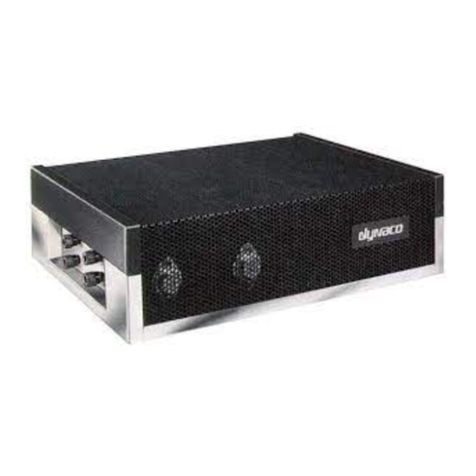
Page 8 of 52
Figure 2-Installing resistors
We recommend the following procedure:
1. Insert all the resistors of the same value, e.g. R2, R3 and R4.
2. Bend the leads as described above.
3. Solder the leads on the back of the board.
4. Clip the leads.
Track your progress by placing a check-mark in the done column as you install each
resistor. Check resistor values with a meter, and by reading the color code (See
Appendix 1). Orient the resistor with the fat brown band on the right, then you can read
both the Color Code column and the resistor from left to right.
¼ Watt, 1% resistors (if you use a lead-bending jig, use the 0.45” width)
Designation
Value Color code Done? ()
R2 1K Brown, Black, Black, Brown, Brown
R3 1K Brown, Black, Black, Brown, Brown
R4 1K Brown, Black, Black, Brown, Brown
R6 10K Brown, Black, Black, Red, Brown
R26 10K Brown, Black, Black, Red, Brown
R27 10K Brown, Black, Black, Red, Brown
R8 20K Red, Black, Black, Red, Brown
R9 20K Red, Black, Black, Red, Brown
R1 15K Brown, Green, Black, Red, Brown
R5 140K Brown, Yellow, Black, Orange, Brown
R7 5K76 Green, Violet, Blue, Brown, Brown
R10 26K1 Red, Blue, Brown, Red, Brown
R11
3K48 Orange, Yellow, Gray, Brown, Brown
R13 3M01 Orange, Black, Brown, Yellow, Brown
R22 165K Brown, Blue, Green, Orange, Brown
R23 100 Brown, Black, Black, Black, Brown
R24 95K3 White, Green, Orange, Red, Brown
R25 This location remains empty
We will defer installation of R12, a 0.1 Ohm power resistor, for a bit later in the assembly
process.
1 See next page for location of R11. The R11 designation is missing from the silk-screen.
